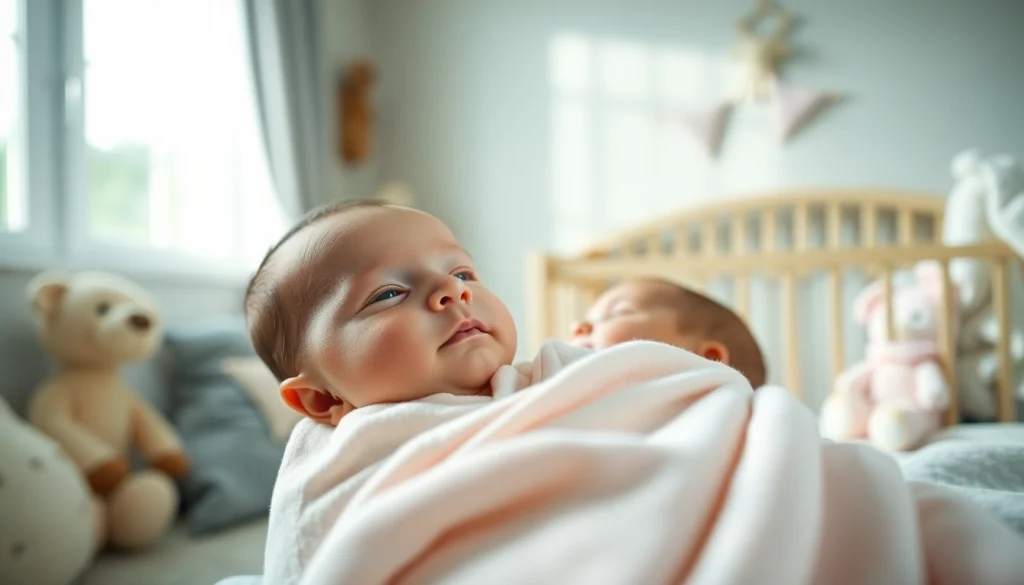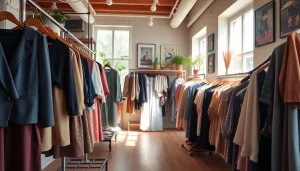The Essential Guide to Choosing Newborn Baby Clothes for Comfort and Style

Understanding the Importance of Newborn Baby Clothes
Choosing the right newborn baby clothes goes beyond aesthetics; they play a crucial role in the comfort and safety of a newborn. With so many options available, new parents can often feel overwhelmed. Understanding the key factors in selecting these essential garments will make the process smoother. From fabric choices to fit and style, each aspect contributes significantly to a baby’s overall well-being.
How Comfort Affects Baby’s Well-being
Newborns spend a vast majority of their time sleeping and resting, making comfort a priority when selecting their clothes. An infant’s skin is incredibly delicate and sensitive, requiring clothing that offers gentle contact without causing irritation. Properly fitted and soft garments can prevent discomfort, which helps to ensure better sleep and fewer disruptions. Babies tend to react positively to clothes that allow freedom of movement and come in breathable fabrics that regulate their body temperature.
Material Choices: What to Look For
When selecting Newborn baby clothes, the choice of material is pivotal. Cotton is often recommended as the best option because of its softness, breathability, and hypoallergenic properties. Organic cotton is even better, as it not only minimizes exposure to chemicals but also feels extra gentle against an infant’s skin. Other materials, such as bamboo or modal, also offer breathability and softness, making them suitable alternatives. It is best to avoid synthetic materials, which can trap heat and moisture, potentially leading to rashes or discomfort.
Safety Considerations in Infant Clothing
Safety should be a paramount concern when selecting newborn garments. Clothing should have no small parts like buttons or hooks that could pose choking hazards. Additionally, be cautious with drawstrings and ties; it’s advisable to choose styles that minimize these risks. It’s also essential to consider flame resistance; many baby clothes are made from materials designed to meet safety standards but always check labels for compliance. Ensuring safety in design is key to maintaining a worry-free environment for new parents.
Types of Newborn Baby Clothes You Need
Knowing what types of newborn baby clothes are essential is critical for new parents preparing for their little one. Here, we’ll explore the necessary items, including daily essentials, accessories, and seasonal staples.
Essential Everyday Outfits for Newborns
Your newborn will require several everyday outfits to accommodate for multiple changes throughout the day. The basics include:
- Bodysuits: These are vital, as they provide excellent coverage and keep diapers in place.
- Sleepers: Footed sleepwear is ideal for keeping the baby warm and comfortable, especially during nighttime.
- Swaddles: Soft, breathable wraps are essential for providing a sense of security and comfort to newborns.
- Caps and Mittens: Essential for regulating temperature and protecting tiny hands from scratching their faces.
Accessories and Extras for Newborns
Beyond clothing basics, there are crucial accessories and extras that contribute to a newborn’s comfort:
- Blankets: Versatile for wrapping, swaddling, or simply keeping the baby cozy.
- Diaper Bags: Choose a spacious bag equipped with various compartments for convenience during outings.
- Hats: Essential for both sun protection and warmth in cooler months.
- Booties: Keep those little feet warm with soft, non-slip footwear.
Seasonal Newborn Baby Clothes Essentials
As seasons change, so do the necessary clothing items for a newborn. Understanding how to dress a baby according to the weather ensures comfort:
- Warm Weather: Light cotton bodysuits, breezy hats, and breathable fabric bibs are perfect for hot climates.
- Cold Weather: Layering is key; include long-sleeved bodysuits under warmer outerwear, and be sure to invest in a good-quality snowsuit for outdoor excursions.
- Transitional Seasons: For spring or autumn, lightweight cardigans or jackets can easily be added or removed as temperatures fluctuate.
Choosing the Right Size for Newborn Baby Clothes
Sizing newborn clothes accurately is beneficial, as fitting mistakes can lead not only to discomfort but also to safety issues. Here’s a comprehensive guide to ensure you choose the correct sizes for your baby.
How to Accurately Measure Your Newborn
To find the right size for your newborn, take the following measurements:
- Weight: Weigh your baby on a scale to determine their weight as many newborn clothes sizes are based on weight.
- Length/Height: Measure your baby’s length from the top of the head to the heel while they are lying down.
- Chest Circumference: Measure the circumference around the fullest part of the chest, keeping the measuring tape snug but not tight.
Understanding Size Chart Terminology
Clothing sizes can vary significantly based on brand, so familiarizing yourself with relevant terminology is important:
- Newborn: Generally fits babies up to 8 pounds and 21 inches in length.
- 0-3 Months: Designed for babies weighing between 8 to 12 pounds and up to 23 inches long.
- 3-6 Months: Suitable for babies weighing 12 to 16 pounds and measuring up to 27 inches.
Common Sizing Mistakes to Avoid
Sizing issues can be easily avoided if you are aware of common pitfalls:
- Choosing Based on Age Alone: Age does not always correlate to size; always refer to weight and height as well.
- Ignoring Brand Differences: Check each brand’s size chart, as variations can be significant.
- Overbuying: Newborns grow rapidly, so it is wise to start with a few outfits in each size to gauge how quickly they’ll be outgrown.
Expert Tips for Dressing Your Newborn
To enhance the experience of dressing your newborn, consider implementing the following expert tips. These will not only simplify your routine but also prioritize comfort for your little one.
Layering Techniques for Different Weather
Layering is pivotal during seasons of fluctuating temperatures:
- Summer: Opt for short-sleeve bodysuits paired with lightweight, breathable overlayers to shield from the sun.
- Winter: Layer with long-sleeved bodysuits beneath thicker outfits. Additionally, blankets can be used for outside excursions to trap warmth.
Dressing for Overnight Comfort
Nighttime dressing is especially crucial since an infant’s sleep is developmentally important. Opt for:
- Lightweight Fabric: Ensure that sleepwear is made with lightweight, soft materials to allow for breathability.
- Easy Access for Diaper Changes: Use garments that are easy to remove or have zippers for quick nighttime changes.
Maintaining Ease and Accessibility for Parents
Simplicity is key when dressing a newborn. Choosing outfits with simple fastenings, such as snaps or stretchy fabrics, can significantly ease the process for parents and help avoid unnecessary fussing during dressing time. Also, consider color-coded outfits that can make it easy to distinguish between day and night wear.
Shopping for Newborn Baby Clothes: Where to Buy
Understanding where to buy newborn baby clothes effectively can save you time and money. This section will explore the pros and cons of different shopping options, alongside approaches to budget-friendly and eco-conscious choices.
In-store vs. Online Shopping Pros and Cons
When it comes to shopping for newborn baby clothes, parents can choose between in-store options and online shopping, each with its advantages and disadvantages:
- In-store Shopping: Allows for immediate examination of material and fit; however, it can be time-consuming and less convenient, especially with a newborn in tow.
- Online Shopping: Offers convenience and access to a larger selection; nonetheless, sizing can be tricky, and returns might be more complex.
Budget-Friendly Options for New Parents
Shopping for newborn baby clothes does not have to break the bank. Discover affordable options that maintain quality:
- Second-Hand Stores: Often stocked with high-quality clothes that are gently used.
- Sales and Deals: Keep an eye on clearance sections for discounted prices on previous seasons’ clothing.
- Buy in Sets: Purchasing clothing in bundles can often save money compared to buying individual pieces.
Eco-Friendly and Organic Clothing Choices
For environmentally conscious parents, selecting eco-friendly or organic clothing is a great option. Look for brands that prioritize sustainable materials, such as organic cotton, which is free from harmful pesticides. Additionally, consider visiting boutiques that specialize in eco-conscious apparel where sustainability is a key selling point.
Conclusion
Understanding the nuances of selecting newborn baby clothes is essential to raising a comfortable and happy baby. From the materials and fit to proper sizing and safety considerations, every aspect plays a vital role in the baby’s comfort and well-being. As the baby grows, being mindful of seasonal changes and dressing appropriately becomes equally important. By equipping yourself with knowledge and options—whether shopping in-store or online—you can create a nurturing environment for your newborn that is both stylish and practical.







